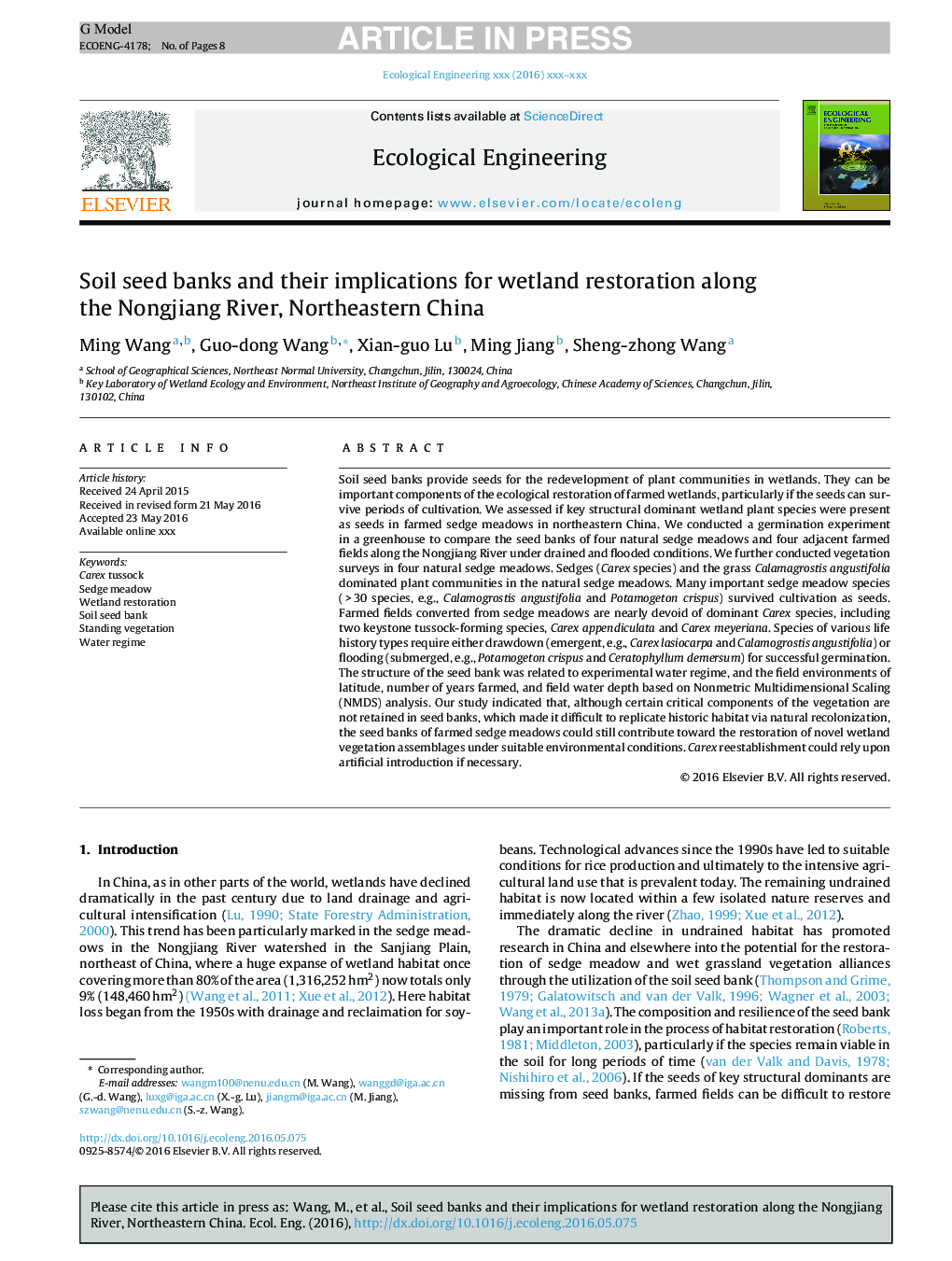| کد مقاله | کد نشریه | سال انتشار | مقاله انگلیسی | نسخه تمام متن |
|---|---|---|---|---|
| 5744084 | 1618003 | 2016 | 8 صفحه PDF | دانلود رایگان |
عنوان انگلیسی مقاله ISI
Soil seed banks and their implications for wetland restoration along the Nongjiang River, Northeastern China
ترجمه فارسی عنوان
بانک های بذر خاکی و پیامدهای آن برای ترمیم تالاب در امتداد رودخانه نونگینگ، شمال شرقی چین
دانلود مقاله + سفارش ترجمه
دانلود مقاله ISI انگلیسی
رایگان برای ایرانیان
کلمات کلیدی
کراس تیسک، چمنزار ترمیم تالاب، بانک بذر خاک، گیاه ایستاده، رژیم آب،
موضوعات مرتبط
علوم زیستی و بیوفناوری
علوم کشاورزی و بیولوژیک
بوم شناسی، تکامل، رفتار و سامانه شناسی
چکیده انگلیسی
Soil seed banks provide seeds for the redevelopment of plant communities in wetlands. They can be important components of the ecological restoration of farmed wetlands, particularly if the seeds can survive periods of cultivation. We assessed if key structural dominant wetland plant species were present as seeds in farmed sedge meadows in northeastern China. We conducted a germination experiment in a greenhouse to compare the seed banks of four natural sedge meadows and four adjacent farmed fields along the Nongjiang River under drained and flooded conditions. We further conducted vegetation surveys in four natural sedge meadows. Sedges (Carex species) and the grass Calamagrostis angustifolia dominated plant communities in the natural sedge meadows. Many important sedge meadow species (Â >Â 30 species, e.g., Calamogrostis angustifolia and Potamogeton crispus) survived cultivation as seeds. Farmed fields converted from sedge meadows are nearly devoid of dominant Carex species, including two keystone tussock-forming species, Carex appendiculata and Carex meyeriana. Species of various life history types require either drawdown (emergent, e.g., Carex lasiocarpa and Calamogrostis angustifolia) or flooding (submerged, e.g., Potamogeton crispus and Ceratophyllum demersum) for successful germination. The structure of the seed bank was related to experimental water regime, and the field environments of latitude, number of years farmed, and field water depth based on Nonmetric Multidimensional Scaling (NMDS) analysis. Our study indicated that, although certain critical components of the vegetation are not retained in seed banks, which made it difficult to replicate historic habitat via natural recolonization, the seed banks of farmed sedge meadows could still contribute toward the restoration of novel wetland vegetation assemblages under suitable environmental conditions. Carex reestablishment could rely upon artificial introduction if necessary.
ناشر
Database: Elsevier - ScienceDirect (ساینس دایرکت)
Journal: Ecological Engineering - Volume 96, November 2016, Pages 26-33
Journal: Ecological Engineering - Volume 96, November 2016, Pages 26-33
نویسندگان
Ming Wang, Guo-dong Wang, Xian-guo Lu, Ming Jiang, Sheng-zhong Wang,
